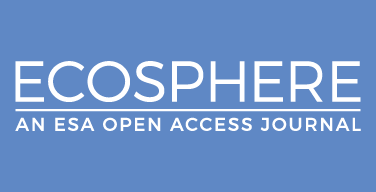
Time is not the driving influence of forest carbon storage, U-M study finds
It is commonly assumed that as forest ecosystems age, they accumulate and store more carbon—but new research finds that it’s more complicated than that.

The Ecological Society of America recently spotlighted bumble bee research from the laboratory of pollinator ecologist Neal Williams, a professor in the UC Davis Department of Entomology and Nematology.
Read More
Scientists have revealed for the first time that some fish sneak up on their prey by hiding behind sharks.
Read More
What motivates farmers to participate in cooperative nature conservation measures?
Read More
It is commonly assumed that as forest ecosystems age, they accumulate and store more carbon—but new research finds that it’s more complicated than that.

The award provides graduate students hands-on training and science policy experience including interacting with congressional decision-makers, federal agency officials and ecologists who work in the science and public policy arena.

Chichedo Duru, a doctoral student in the Department of Chemistry’s Bioenvironmental Science program, is the recipient of the 2025 Katherine S. McCarter Graduate Student Policy Award from the Ecological Society of America.

A new analytical method represents a step forward for understanding wildlife populations—and identifying the best strategies to conserve them.

For many plant species, flowering is biologically synced with the seasons; scientists are clocking blooms to understand our ever-changing planet.

Alabama A&M Ph.D. student Olufemi Fatunsin earns the 2025 Ecological Society of America Policy Award.

New research finds that a mix of corolla sizes offers strong opportunities to promote urban biodiversity.

A new study confirms local origins of young Chinook salmon in California’s restored Putah creek for the first time.

Researchers discovered that the blue-spotted sea slug, a type of mollusk, uses its lateral projections like hands to prey on fish and jellyfish.

For the first time, scientists described a hummingbird chick potentially mimicking a poisonous caterpillar to avoid getting eaten.

New study finds Phyllaplysia taylori is an outsize climate-resilient ally for coastal ecosystems.

A new study using the largest network of microphones to track birds in the U.S. is providing crucial insights for managing and restoring fire-prone forests across California’s Sierra Nevada region.

Researchers have uncovered a critical link between rising temperatures and declines in a species’ population, shedding new light on how global warming threatens natural ecosystems.

Syracuse University student Eva Legge receives ESA’s Graduate Student Policy Award, SAF’s Visiting Scholar Award and an NSF Graduate Student Research Fellowship.

A new study shows that the replacement of wild herbivores with domestic grazers can drastically influence the numbers of ground-dwelling arthropods like spiders, as well as disease-carrying animals like ticks and mites.

A new study highlights how animals unintentionally document our environmental problems.

New research from Japan’s Mt. Norikura shows that birds breeding at high elevations rely on insects that originate downslope.
Notifications